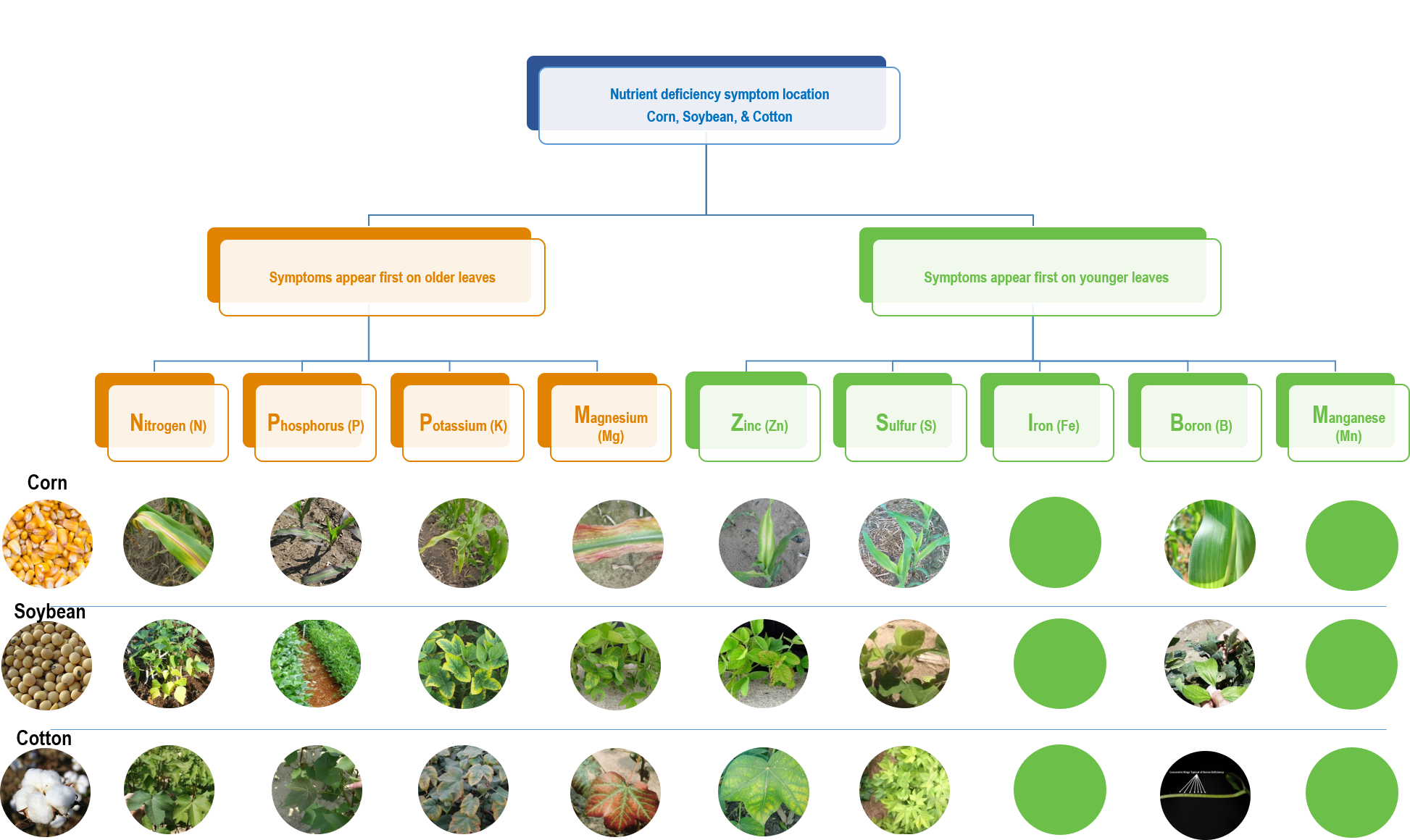Generally, a nutrient deficiency occurs as a result of low soil nutrient levels. However, prevailing environmental conditions, soil properties, and growth conditions may restrict nutrient uptake and induce deficiencies in crops even if soil nutrient levels are deemed sufficient for optimum yield. For example, low or high soil pH, soil compaction, and excessively wet or dry soil may prevent nutrient uptake. A handy diagnostic tool to identify nutrient deficiency in crops is via visual symptoms. In some instances, this tool may not provide a definite diagnosis of the nutrient status of the plant. Keep in mind that there are other conditions that are cable of inducing symptoms that closely resemble those of nutrient deficiencies. Visual symptoms should be corroborated with tissue and/or soil testing. Adequate knowledge of visual symptoms and tissue testing may help guide corrective actions in-season or preventive action in the following season to avoid yield loss.
The form and location of symptoms on the affected crop will help guide the diagnosis. Symptoms associated with deficiency may take several forms including chlorosis, necrosis, or abnormal growth. Chlorosis occurs when the production of chlorophyll is reduced which results in a yellow to pale green leaf color. Nitrogen (N), sulfur (S), iron (Fe), and magnesium (Mg) are nutrients that play important roles in chlorophyll production and function, hence, their deficiencies tend to cause chlorosis. Next is necrosis, which occurs when the plant tissue dies. Necrosis is commonly associated with N, phosphorus (P), and potassium (K) deficiencies. Abnormal growth occurs when the inadequate amounts of a nutrient in the plant restrict cell elongation and replication resulting in stunted growth, deformation, or crinkled leaves.
Where the symptomology occurs on the plant depends on the mobility of the nutrient within the plant. Plant nutrients can be classified as mobile or immobile within the plant. Mobile nutrients such as N, P, K, Mg can be translocated from the older to the older leaves to the developing plant parts and hence, deficiency symptoms tend to show on older lower leaves. On the other hand, immobile nutrients (Many micronutrients, Ca, and S) are not easily translocated within the plants and deficiency symptoms occur in younger upper leaves. This blog provides information on identifying nutrient deficiencies in selected row crops using visual symptoms and available in-season corrective action to minimize crop yield loss. Detailed information on each nutrient deficiency symptoms for corn, cotton and soybean are presented in the table below.



